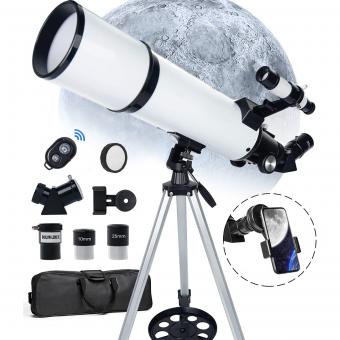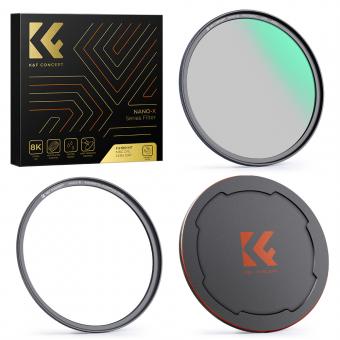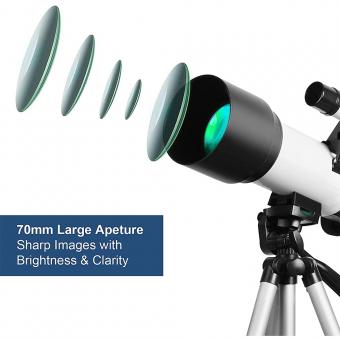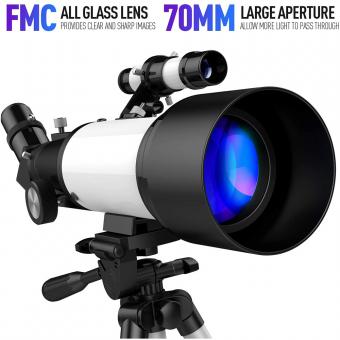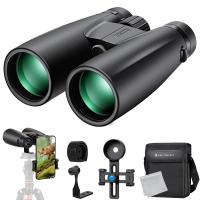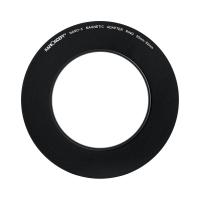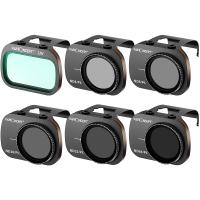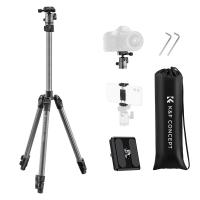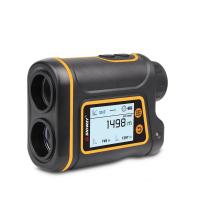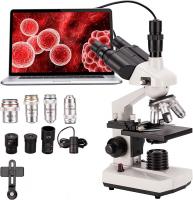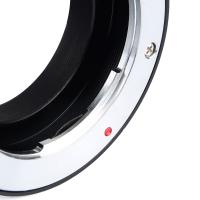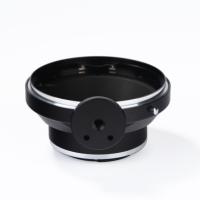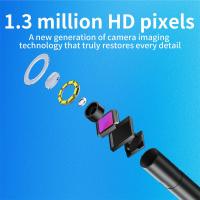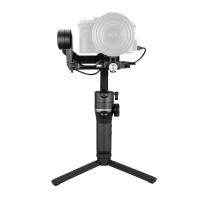Telescope That Can See Planets Clearly?
A telescope that can see planets clearly is typically a refracting or reflecting telescope with a large aperture and high-quality optics. The larger the aperture, the more light the telescope can gather, which allows for greater detail and clarity in the images produced. Additionally, the quality of the optics, including the lenses or mirrors, can greatly impact the clarity of the images produced. Telescopes with advanced features such as adaptive optics or computerized tracking systems can also help to improve the clarity of planetary images by compensating for atmospheric distortion and ensuring precise tracking of the planet. Some popular telescopes for planetary observation include the Celestron NexStar 8SE, the Meade LX90, and the Orion SkyQuest XT10i IntelliScope.
1、 Optical Design and Aperture Size
A telescope that can see planets clearly depends on both its optical design and aperture size. The optical design determines the quality of the image produced by the telescope, while the aperture size determines the amount of light that the telescope can gather. A larger aperture size allows for more light to enter the telescope, resulting in a brighter and clearer image.
In recent years, there have been advancements in telescope technology that have allowed for even clearer views of planets. One such advancement is the use of adaptive optics, which corrects for atmospheric distortions that can affect the clarity of the image. Another advancement is the use of multiple mirrors in the telescope's design, which can increase the amount of light gathered and improve image quality.
However, it is important to note that even with the best optical design and aperture size, there are still limitations to what can be seen with a telescope. Factors such as the planet's distance from Earth, atmospheric conditions, and light pollution can all affect the clarity of the image. Nonetheless, a telescope with a good optical design and large aperture size can provide stunning views of planets and other celestial objects.
2、 Focal Length and Magnification
A telescope that can see planets clearly is a type of telescope that has a large aperture and high-quality optics. The aperture is the diameter of the telescope's main lens or mirror, and the larger the aperture, the more light the telescope can gather. This allows for a clearer and brighter image of planets, which can be quite small and distant.
In addition to a large aperture, a telescope that can see planets clearly also has high-quality optics. This means that the lenses or mirrors are made from materials that minimize distortion and aberrations, which can cause blurring and other image quality issues. The telescope's optics are also designed to provide a high level of contrast, which helps to bring out details on the planet's surface.
Focal length and magnification are also important factors in a telescope's ability to see planets clearly. Focal length is the distance between the telescope's main lens or mirror and the point where the image is formed. A longer focal length can provide a higher magnification, which can be useful for observing planets in detail. However, too high a magnification can also make the image appear dimmer and less clear.
The latest point of view on telescopes that can see planets clearly is that advances in technology have made it possible to create telescopes with even larger apertures and higher-quality optics. This has led to the development of telescopes that can provide incredibly detailed views of planets, including features such as mountains, valleys, and even weather patterns. Additionally, new imaging techniques and software have made it possible to capture and process images of planets in unprecedented detail, allowing astronomers to study these objects in greater depth than ever before.
3、 Mount Type and Stability
A telescope that can see planets clearly is an essential tool for amateur astronomers and professionals alike. With the ability to observe the planets in our solar system, such as Jupiter, Saturn, and Mars, a telescope can provide a wealth of information about their features, atmospheres, and moons.
However, having a telescope that can see planets clearly is not enough. The mount type and stability of the telescope are equally important factors to consider. The mount is the part of the telescope that holds the optical tube and allows it to move in different directions. A stable mount is crucial for keeping the telescope steady and reducing vibrations that can affect the quality of the image.
There are two main types of mounts: alt-azimuth and equatorial. Alt-azimuth mounts are simpler and easier to use, but they are not ideal for tracking celestial objects as they move across the sky. Equatorial mounts, on the other hand, are designed to follow the rotation of the Earth and make it easier to track objects as they move.
In recent years, there has been a growing trend towards using computerized mounts that can automatically track celestial objects. These mounts use GPS and other technologies to locate and track objects, making it easier for amateur astronomers to observe planets and other celestial objects.
In conclusion, having a telescope that can see planets clearly is essential for observing the wonders of our solar system. However, choosing the right mount type and stability is equally important for getting the best possible image. With the latest advances in technology, amateur astronomers have more options than ever before for observing the planets and other celestial objects.
4、 Eyepiece Quality and Size
A telescope that can see planets clearly is the most important factor when it comes to observing celestial objects. The ability to see planets in detail is dependent on the telescope's aperture, which is the diameter of the main lens or mirror. The larger the aperture, the more light the telescope can gather, resulting in a brighter and clearer image. Additionally, the quality of the optics and the telescope's magnification also play a crucial role in observing planets.
However, it's not just the telescope that matters. The eyepiece quality and size are equally important. The eyepiece is the part of the telescope that you look through, and it determines the magnification and field of view. A high-quality eyepiece can provide a sharper and clearer image, while a larger eyepiece can provide a wider field of view.
In recent years, there has been a growing trend towards using high-quality eyepieces with larger field of views. This is because a wider field of view allows for a more immersive observing experience, and it can also make it easier to locate and track objects in the sky. Additionally, advancements in eyepiece technology have led to the development of eyepieces with better coatings and materials, resulting in improved contrast and color accuracy.
In conclusion, while a telescope with a large aperture is essential for observing planets, the eyepiece quality and size are equally important. Investing in a high-quality eyepiece can greatly enhance the observing experience and provide a clearer and more immersive view of the planets.






